 Search by Keyword
Sign Up Below for our MONTHLY BEATLES TRIVIA QUIZ!
|
“WHEN I’M SIXTY-FOUR”
(John Lennon – Paul McCartney)
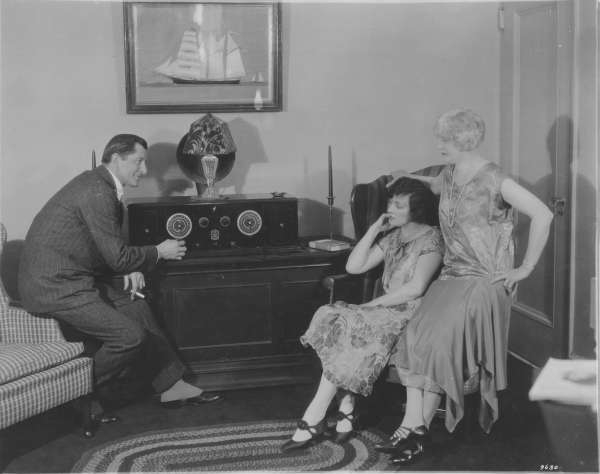 A lot of people have fond memories of the music that they were exposed to by their parents when growing up. However, it seems that most dismiss this music as "old fashioned" as the years go by, preferring whatever style or genre of music that became popular during their teen years. But, when in a particularly nostalgic mood, a notable degree of respect for these distant memories occasionally surfaces, many viewing their parents' music as the historic soundtrack of their childhood. A lot of people have fond memories of the music that they were exposed to by their parents when growing up. However, it seems that most dismiss this music as "old fashioned" as the years go by, preferring whatever style or genre of music that became popular during their teen years. But, when in a particularly nostalgic mood, a notable degree of respect for these distant memories occasionally surfaces, many viewing their parents' music as the historic soundtrack of their childhood.
 If you happen to choose to make your living as a songwriter, these early remembrances probably can’t help but creep into your consciousness and emerge from time to time in your compositions without your even knowing it. Interestingly, Paul McCartney chose to pay particular homage to these early childhood memories by writing a song directly influenced by these sounds and styles, not feeling a bit of embarrassment in the process. If you happen to choose to make your living as a songwriter, these early remembrances probably can’t help but creep into your consciousness and emerge from time to time in your compositions without your even knowing it. Interestingly, Paul McCartney chose to pay particular homage to these early childhood memories by writing a song directly influenced by these sounds and styles, not feeling a bit of embarrassment in the process.
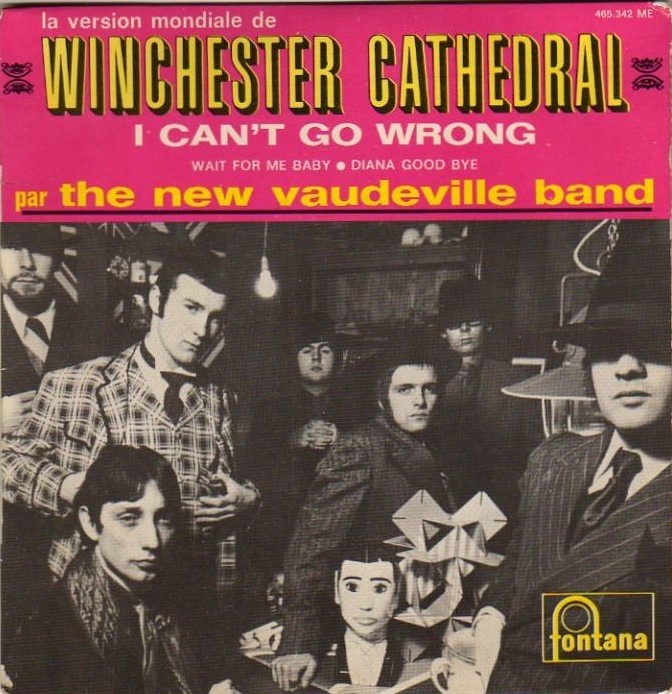 Achieving the stature that The Beatles had by late 1966, he realized that whatever they released would be accepted, even a nostalgic trip back to the 1920's. And taken within the context of being a throwback to the fictional “Sgt. Pepper” band, along with this song being released on the heels of the recent #1 novelty song “Winchester Cathedral” by the New Vaudeville Band, which appeared as coming from this same by-gone era, Paul’s intuition was correct. While viewed coolly by many die-hard Beatles fans, it eventually won the hearts of their parents as well as becoming an intrinsic element of the “Sgt. Pepper” album. Achieving the stature that The Beatles had by late 1966, he realized that whatever they released would be accepted, even a nostalgic trip back to the 1920's. And taken within the context of being a throwback to the fictional “Sgt. Pepper” band, along with this song being released on the heels of the recent #1 novelty song “Winchester Cathedral” by the New Vaudeville Band, which appeared as coming from this same by-gone era, Paul’s intuition was correct. While viewed coolly by many die-hard Beatles fans, it eventually won the hearts of their parents as well as becoming an intrinsic element of the “Sgt. Pepper” album.
Songwriting History
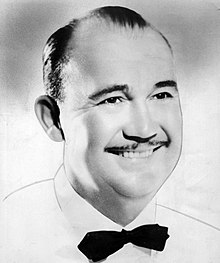 “My dad was an instinctive musician,” related Paul in the book “Anthology.” “He’d played trumpet in a little jazz band when he was younger. I unearthed a photo in the 60’s which someone in the family had given me, and there he is in front of a big bass drum. That gave us the idea for ‘Sgt. Pepper’: ‘The Jimmy Mac Jazz Band.’ My dad is sitting there as a 24-year-old in his tux…Dad played the trumpet until his teeth gave out…He would play the piano at home. We always had a piano…I have some lovely childhood memories of lying on the floor and listening to my dad play ‘Lullaby Of The Leaves’ (still a big favorite of mine), and music from the Paul Whiteman era, old songs like ‘Stairway To Paradise.’” “My dad was an instinctive musician,” related Paul in the book “Anthology.” “He’d played trumpet in a little jazz band when he was younger. I unearthed a photo in the 60’s which someone in the family had given me, and there he is in front of a big bass drum. That gave us the idea for ‘Sgt. Pepper’: ‘The Jimmy Mac Jazz Band.’ My dad is sitting there as a 24-year-old in his tux…Dad played the trumpet until his teeth gave out…He would play the piano at home. We always had a piano…I have some lovely childhood memories of lying on the floor and listening to my dad play ‘Lullaby Of The Leaves’ (still a big favorite of mine), and music from the Paul Whiteman era, old songs like ‘Stairway To Paradise.’”
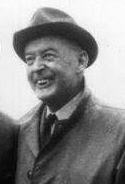 “He played piano from when I was born,” Paul relates about his father Jim McCartney. “To this day, I have a deep love for the piano, maybe from my dad: it must be in the genes…He was my musical education. There was none in school, we never got music lessons. He would always point out things like the chord changes at the beginning of ‘Stairway To Paradise.’ Dad was a good self-taught pianist, but because he had not had training himself, he always refused to teach me...In the end, I learnt to play by ear, just like him, making it all up.” “He played piano from when I was born,” Paul relates about his father Jim McCartney. “To this day, I have a deep love for the piano, maybe from my dad: it must be in the genes…He was my musical education. There was none in school, we never got music lessons. He would always point out things like the chord changes at the beginning of ‘Stairway To Paradise.’ Dad was a good self-taught pianist, but because he had not had training himself, he always refused to teach me...In the end, I learnt to play by ear, just like him, making it all up.”
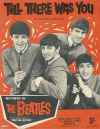 “I had started fiddling around on my dad’s piano,” Paul stated. “I wrote ‘When I’m Sitxy-Four’ on that when I was still sixteen (it was all rather tongue in cheek) and I never forgot it. I wrote that tune vaguely thinking that it could maybe come in handy in a musical comedy or something. Like I say, I didn’t know what career I was going to take back then…I wasn’t necessarily looking to be a rock’n’roller. When I wrote ‘When I’m Sixty-Four’ I thought I was writing a song for Sinatra. There were records other than rock’n’roll that were important to me. And that would come out in The Beatles with songs like ‘Till There Was You.’” “I had started fiddling around on my dad’s piano,” Paul stated. “I wrote ‘When I’m Sitxy-Four’ on that when I was still sixteen (it was all rather tongue in cheek) and I never forgot it. I wrote that tune vaguely thinking that it could maybe come in handy in a musical comedy or something. Like I say, I didn’t know what career I was going to take back then…I wasn’t necessarily looking to be a rock’n’roller. When I wrote ‘When I’m Sixty-Four’ I thought I was writing a song for Sinatra. There were records other than rock’n’roll that were important to me. And that would come out in The Beatles with songs like ‘Till There Was You.’”
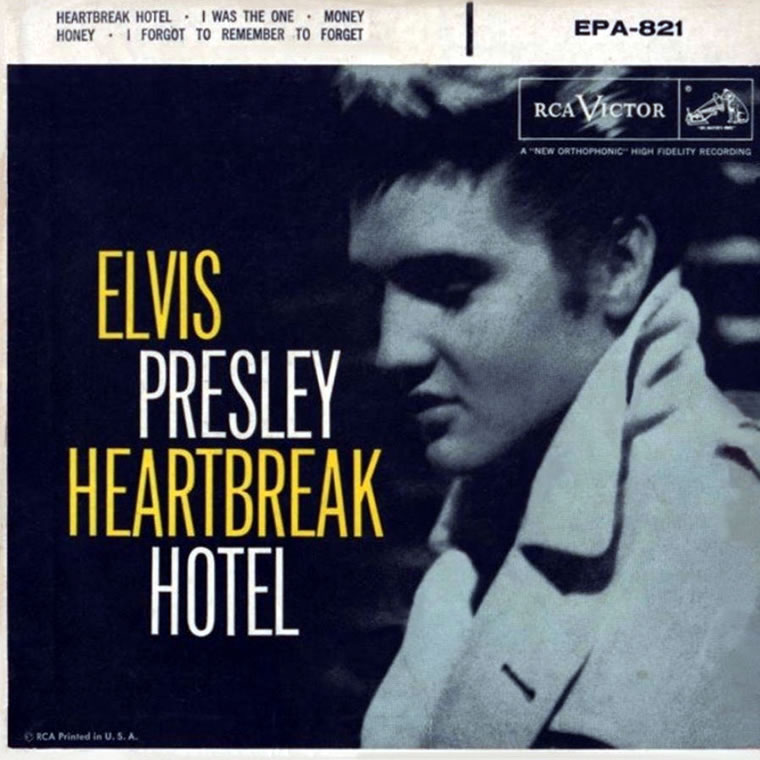 Although Paul states above, and elsewhere, that he composed this song when he was sixteen years old (1958), this appears to contradict claims he made elsewhere. For instance, there's been various quotes from Paul indicating it was written before the 'rock and roll' boom of 1956. "Rock and roll was about to happen that year, it was about to break. I was still a little bit cabaret minded," McCartney stated in 1987. "I wrote a lot of stuff thinking I was going to end up in the cabaret, not realizing that rock and roll was particularly going to happen. When I was fourteen there wasn't that much of a clue that it was going to happen," he recalled in 1974. Historically, the advent of 'rock and roll' music in Liverpool came with the release of "Heartbreak Hotel" around May of 1956, not to mention that by 1958, Paul had already met and partnered up with John, both of their love for 'rock and roll' solidifying their friendship. Therefore, Paul's mention of age 14 in the above quote, which would make it 1956, appears to be more accurate for the initial writing of what became "When I'm Sixty-Four." Although Paul states above, and elsewhere, that he composed this song when he was sixteen years old (1958), this appears to contradict claims he made elsewhere. For instance, there's been various quotes from Paul indicating it was written before the 'rock and roll' boom of 1956. "Rock and roll was about to happen that year, it was about to break. I was still a little bit cabaret minded," McCartney stated in 1987. "I wrote a lot of stuff thinking I was going to end up in the cabaret, not realizing that rock and roll was particularly going to happen. When I was fourteen there wasn't that much of a clue that it was going to happen," he recalled in 1974. Historically, the advent of 'rock and roll' music in Liverpool came with the release of "Heartbreak Hotel" around May of 1956, not to mention that by 1958, Paul had already met and partnered up with John, both of their love for 'rock and roll' solidifying their friendship. Therefore, Paul's mention of age 14 in the above quote, which would make it 1956, appears to be more accurate for the initial writing of what became "When I'm Sixty-Four."
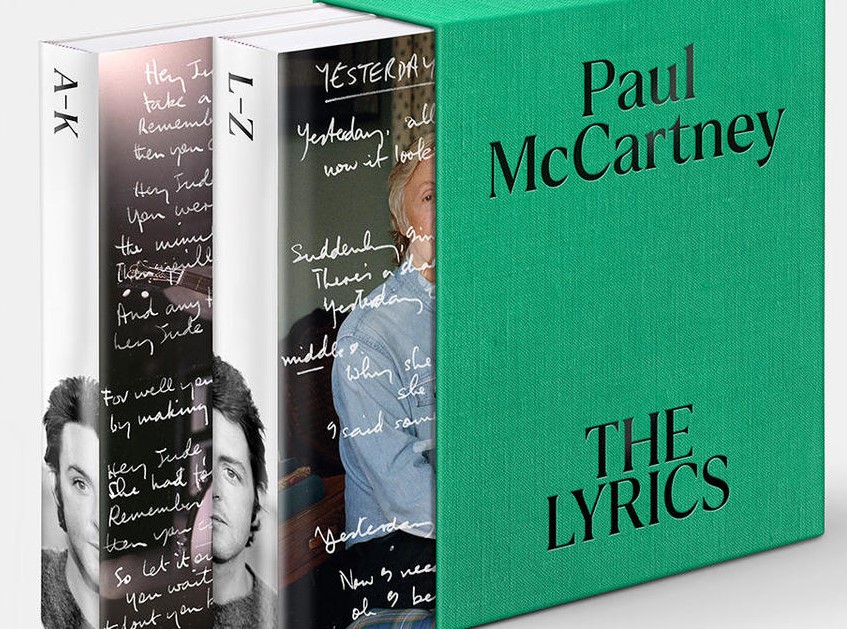 But how much of the song had been written when he was 14? "I never did anything with it until I was about 24 and then we put the words to it,” Paul once explained. In 1984, McCartney stated: “It was kind of a cabaret tune. Then, years later, I put words to it.” In his 1997 book “Many Years From Now,” his quote is a little unclear about the matter: “I thought it was too vaudevillian, so I had to get some cod lines to take the sting out of it, and put the tongue very firmly in cheek.” In his 2021 book "The Lyrics," Paul insists that all of the lyrics were written just before it was recorded in 1966. "The melody of 'When I'm Sixty-Four' was fully worked out by the time I was about sixteen. It was one of my little party pieces, and when we were on the lookout for songs for The Beatles, I thought it would be quite good to put words to it." But how much of the song had been written when he was 14? "I never did anything with it until I was about 24 and then we put the words to it,” Paul once explained. In 1984, McCartney stated: “It was kind of a cabaret tune. Then, years later, I put words to it.” In his 1997 book “Many Years From Now,” his quote is a little unclear about the matter: “I thought it was too vaudevillian, so I had to get some cod lines to take the sting out of it, and put the tongue very firmly in cheek.” In his 2021 book "The Lyrics," Paul insists that all of the lyrics were written just before it was recorded in 1966. "The melody of 'When I'm Sixty-Four' was fully worked out by the time I was about sixteen. It was one of my little party pieces, and when we were on the lookout for songs for The Beatles, I thought it would be quite good to put words to it."
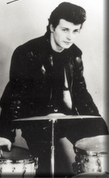 But is this fully accurate, or were there some lyrics already written during the early Beatles days? In 1967, John stated: "It was just one of those ones that he'd had, that we've all got, really - half a song. And this was just one of those that was quite a hit with us. We used to do them when the amps broke down, just sing it on the piano." Former Beatles drummer Pete Best has also gone on record to say that he remembers “When I’m Sixty-Four” being played by McCartney on piano whenever the electricity went out or the amps broke down. And since it was being sung, as stated above by John, a certain portion of the lyrics had to have been written by then. And, as Paul has stated above, he referred to the originally written song as "tongue in cheek" and for possible inclusion in a "musical comedy." He surely wouldn't have said that if there were no lyrics written yet. But is this fully accurate, or were there some lyrics already written during the early Beatles days? In 1967, John stated: "It was just one of those ones that he'd had, that we've all got, really - half a song. And this was just one of those that was quite a hit with us. We used to do them when the amps broke down, just sing it on the piano." Former Beatles drummer Pete Best has also gone on record to say that he remembers “When I’m Sixty-Four” being played by McCartney on piano whenever the electricity went out or the amps broke down. And since it was being sung, as stated above by John, a certain portion of the lyrics had to have been written by then. And, as Paul has stated above, he referred to the originally written song as "tongue in cheek" and for possible inclusion in a "musical comedy." He surely wouldn't have said that if there were no lyrics written yet.
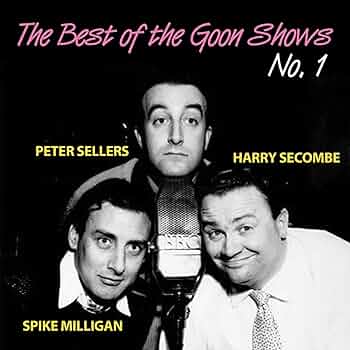 As for completing the composing of this song in preparation for recording, which is presumed to have been done around November of 1966, Paul explains it this way: "’When I’m Sixty-Four’ was a case of me looking for stuff to do for ‘Pepper.’ I thought it was a good little tune…’Will you still need me?’ is still a love song. ‘Will you still look after me,’ okay, but ‘Will you still feed me?’ goes into ‘Goon Show’ humor. I mean, imagine having three kids called ‘Vera, Chuck and Dave!’ It was very tongue in cheek and that to me is the attraction of it. I liked ‘indicate precisely what…’ I like words that are exact, that you might find on a form. It’s a nice phrase, it scans." His original handwritten lyric sheet contains the lines "Indicate precisely what you mean to do / Yours truly, waiting for you," Paul crossing out some the words and replacing them with "mean to say" and "Yours sincerely, wasting away" (as seen below). As for completing the composing of this song in preparation for recording, which is presumed to have been done around November of 1966, Paul explains it this way: "’When I’m Sixty-Four’ was a case of me looking for stuff to do for ‘Pepper.’ I thought it was a good little tune…’Will you still need me?’ is still a love song. ‘Will you still look after me,’ okay, but ‘Will you still feed me?’ goes into ‘Goon Show’ humor. I mean, imagine having three kids called ‘Vera, Chuck and Dave!’ It was very tongue in cheek and that to me is the attraction of it. I liked ‘indicate precisely what…’ I like words that are exact, that you might find on a form. It’s a nice phrase, it scans." His original handwritten lyric sheet contains the lines "Indicate precisely what you mean to do / Yours truly, waiting for you," Paul crossing out some the words and replacing them with "mean to say" and "Yours sincerely, wasting away" (as seen below).
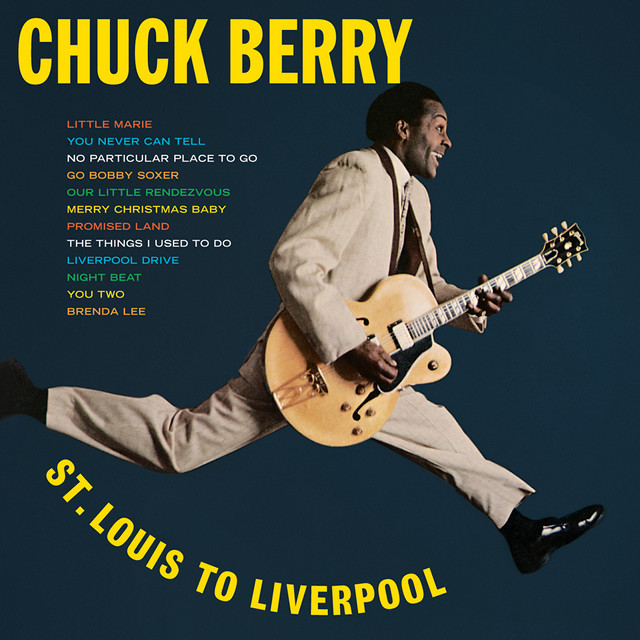 As for the lyrics chosen for "When I'm Sixty-Four," Paul cites the influence of poet Louis MacNeice. In his book "The Lyrics," he states: "NacNeice is great on the day-to-day. I think he would recognize 'You can knit a sweater by the fireside / Sunday mornings, go for a ride.' All the comfortable things that retired people do. Another of (Louis) MacNeice's strengths is managing a cast of characters. Everyone down to the grandchildren: 'Vera, Chuck and Dave.' 'Chuck' is not a very common name in the UK, but there were a lot of 'Chucks' on TV. Chuck Connors in 'The Rifleman,' of course...It's an amusing name at its heart - partly because 'chuck' means vomit in some quarters. Then there was Chuck Berry. When you say 'Chuck Berry,' it doesn't sound the least bit amusing; it's all about context." As for the lyrics chosen for "When I'm Sixty-Four," Paul cites the influence of poet Louis MacNeice. In his book "The Lyrics," he states: "NacNeice is great on the day-to-day. I think he would recognize 'You can knit a sweater by the fireside / Sunday mornings, go for a ride.' All the comfortable things that retired people do. Another of (Louis) MacNeice's strengths is managing a cast of characters. Everyone down to the grandchildren: 'Vera, Chuck and Dave.' 'Chuck' is not a very common name in the UK, but there were a lot of 'Chucks' on TV. Chuck Connors in 'The Rifleman,' of course...It's an amusing name at its heart - partly because 'chuck' means vomit in some quarters. Then there was Chuck Berry. When you say 'Chuck Berry,' it doesn't sound the least bit amusing; it's all about context."
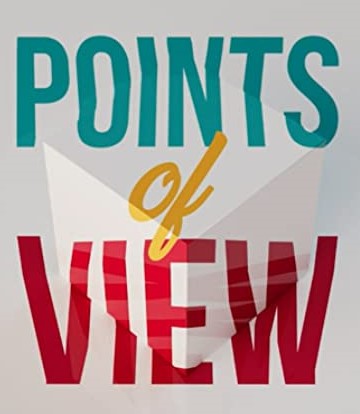 Other lyrics of the song are also explained by Paul in his book "The Lyrics." "When it came to 'mending a fuse,' I was something of a handyman. Certainly when stacked against John, who had no idea how to change a plug. In those days, back in the 1950's, most people could change a plug! Back then fuses blew all the time...Then there's 'Send me a postcard, drop me a line / Stating point of view.' I used to think that the BBC got the title of 'Points Of View,' their television show based on viewers' letters, from 'When I'm Sixty-Four.' Somebody from the BBC even told me that. But the program started in 1961, so it was probably the other way round....If you look at the rhyme scheme here, you've got abcc ('hair / now / valentine / wine'). The more conventional thing would be abab. In many of the songs from this time I'm resisting the conventional structure of a verse. It's one of the things that gives this song, which is really quite simple, a little extra pizzazz." Other lyrics of the song are also explained by Paul in his book "The Lyrics." "When it came to 'mending a fuse,' I was something of a handyman. Certainly when stacked against John, who had no idea how to change a plug. In those days, back in the 1950's, most people could change a plug! Back then fuses blew all the time...Then there's 'Send me a postcard, drop me a line / Stating point of view.' I used to think that the BBC got the title of 'Points Of View,' their television show based on viewers' letters, from 'When I'm Sixty-Four.' Somebody from the BBC even told me that. But the program started in 1961, so it was probably the other way round....If you look at the rhyme scheme here, you've got abcc ('hair / now / valentine / wine'). The more conventional thing would be abab. In many of the songs from this time I'm resisting the conventional structure of a verse. It's one of the things that gives this song, which is really quite simple, a little extra pizzazz."
 McCartney adds: "I hit upon the idea that 'sixty-four' would be more amusing than sixty-five. To be just shy of the retirement age. I was always trying to put a little twist on things instead of, in this case, composing a straight-up music hall song." Some writers suggest that it was written precisely to coincide with his father’s 64th birthday, which was on July 2nd, 1966. Paul himself puts this thought to rest. “My dad was probably only 56 when I wrote it. Retirement age in Britain is 65, so maybe I thought 64 was a good prelude. But probably 64 just worked well as a number.” In his book "The Lyrics," Paul adds: "Then I would stick in 'Doing the garden, digging the weeds.' 'Digging the weed' is also a way of saying 'enjoying a little pot.' We would always slip in those little jokes because we knew our friends would get them." So I think it's safe to say that the line "digging the weed" was definitely written in 1966 after they had discovered the pleasures of marijuana. McCartney adds: "I hit upon the idea that 'sixty-four' would be more amusing than sixty-five. To be just shy of the retirement age. I was always trying to put a little twist on things instead of, in this case, composing a straight-up music hall song." Some writers suggest that it was written precisely to coincide with his father’s 64th birthday, which was on July 2nd, 1966. Paul himself puts this thought to rest. “My dad was probably only 56 when I wrote it. Retirement age in Britain is 65, so maybe I thought 64 was a good prelude. But probably 64 just worked well as a number.” In his book "The Lyrics," Paul adds: "Then I would stick in 'Doing the garden, digging the weeds.' 'Digging the weed' is also a way of saying 'enjoying a little pot.' We would always slip in those little jokes because we knew our friends would get them." So I think it's safe to say that the line "digging the weed" was definitely written in 1966 after they had discovered the pleasures of marijuana.
 As to whether John Lennon actually made any contribution to the song, the assorted quotes are a little sketchy. “It’s pretty much my song,” Paul insists in his book “Many Years From Now.” “I think I helped with some of the words,” John said in 1972. He completely distanced himself from the song in 1980, however, by saying: “Paul’s completely. I would never dream of writing a song like that. There’s some things I never think about, and that’s one of them.” The conclusion, therefore, is that John had very little, if any, involvement in the writing of “When I’m Sixty-Four.” As to whether John Lennon actually made any contribution to the song, the assorted quotes are a little sketchy. “It’s pretty much my song,” Paul insists in his book “Many Years From Now.” “I think I helped with some of the words,” John said in 1972. He completely distanced himself from the song in 1980, however, by saying: “Paul’s completely. I would never dream of writing a song like that. There’s some things I never think about, and that’s one of them.” The conclusion, therefore, is that John had very little, if any, involvement in the writing of “When I’m Sixty-Four.”
Recording History
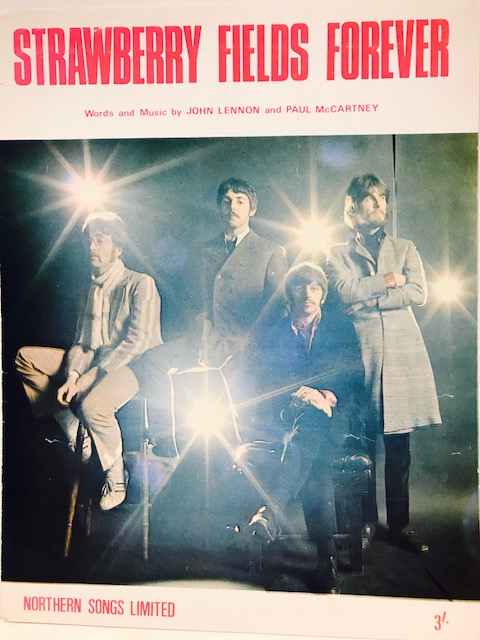 After doing much work on “Strawberry Fields Forever” for a couple of weeks and thinking it was complete (which it wasn’t), they turned their attention to the second song intended for their new unnamed album, which was “When I’m Sixty-Four.” Since “Strawberry Fields Forever” was pulled from these sessions in order to be utilized for their next single and was omitted from their forthcoming “Sgt. Pepper” album, “Sixty-Four” was therefore the first song actually recorded for the album. After doing much work on “Strawberry Fields Forever” for a couple of weeks and thinking it was complete (which it wasn’t), they turned their attention to the second song intended for their new unnamed album, which was “When I’m Sixty-Four.” Since “Strawberry Fields Forever” was pulled from these sessions in order to be utilized for their next single and was omitted from their forthcoming “Sgt. Pepper” album, “Sixty-Four” was therefore the first song actually recorded for the album.
 The Beatles entered EMI Studio Two at about 6:45 pm on December 6th, 1966 to begin work on this song, the first duties of the day, however, being recording taped Christmas messages for "pirate" radio stations “Radio London” and “Radio Caroline.” After this was completed, the band began rehearsals for a proposed arrangement for “When I’m Sixty-Four.” “Because the group was already so familiar with the song,” explained engineer Geoff Emerick in his 2007 book “Here, There And Everywhere,” “this backing track was laid down in just a couple of hours.” The Beatles entered EMI Studio Two at about 6:45 pm on December 6th, 1966 to begin work on this song, the first duties of the day, however, being recording taped Christmas messages for "pirate" radio stations “Radio London” and “Radio Caroline.” After this was completed, the band began rehearsals for a proposed arrangement for “When I’m Sixty-Four.” “Because the group was already so familiar with the song,” explained engineer Geoff Emerick in his 2007 book “Here, There And Everywhere,” “this backing track was laid down in just a couple of hours.”
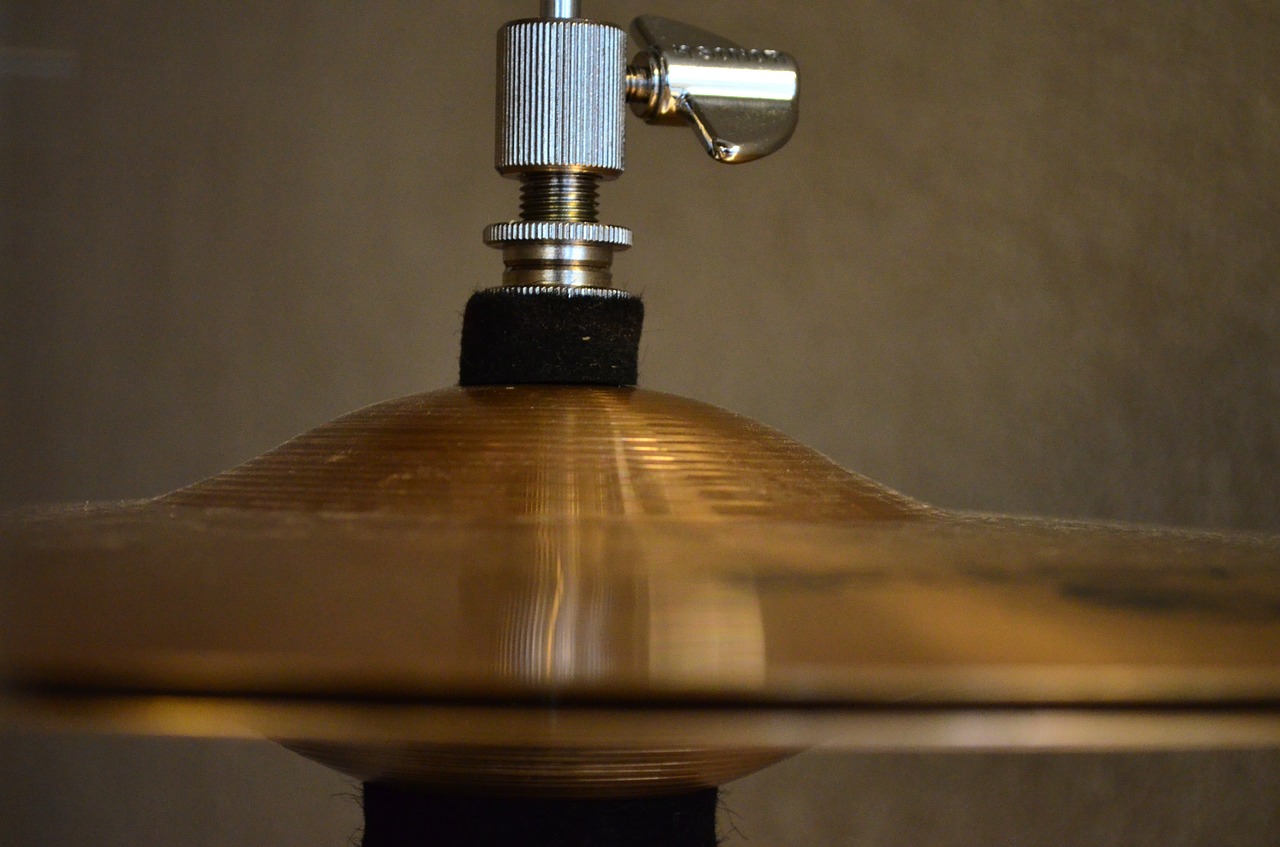 After they spent a little bit of time rehearsing the arrangement for this song, the band attempted to officially laying down a rhythm track. Only two takes of the song needed to be recorded to get the rhythm track down acceptably, "take two" being deemed as the best, although it was recorded in a piece-meal fashion. Track one of this four-track tape contained Paul on bass, Ringo on kick drum and hi-hat only, and John on electric guitar. Then, Paul overdubbed himself on piano on track two of the tape while Ringo recorded brushed snare drum on track three. While George was present on this day, evidenced by his voice being heard on the Christmas messages taped earlier in the session, he apparently did not participate in the recording of the song at this point. This completed the session for the day, no vocals being added at all yet. At 1:50 am the following morning, they left the studios and took the rest of the day off. After they spent a little bit of time rehearsing the arrangement for this song, the band attempted to officially laying down a rhythm track. Only two takes of the song needed to be recorded to get the rhythm track down acceptably, "take two" being deemed as the best, although it was recorded in a piece-meal fashion. Track one of this four-track tape contained Paul on bass, Ringo on kick drum and hi-hat only, and John on electric guitar. Then, Paul overdubbed himself on piano on track two of the tape while Ringo recorded brushed snare drum on track three. While George was present on this day, evidenced by his voice being heard on the Christmas messages taped earlier in the session, he apparently did not participate in the recording of the song at this point. This completed the session for the day, no vocals being added at all yet. At 1:50 am the following morning, they left the studios and took the rest of the day off.
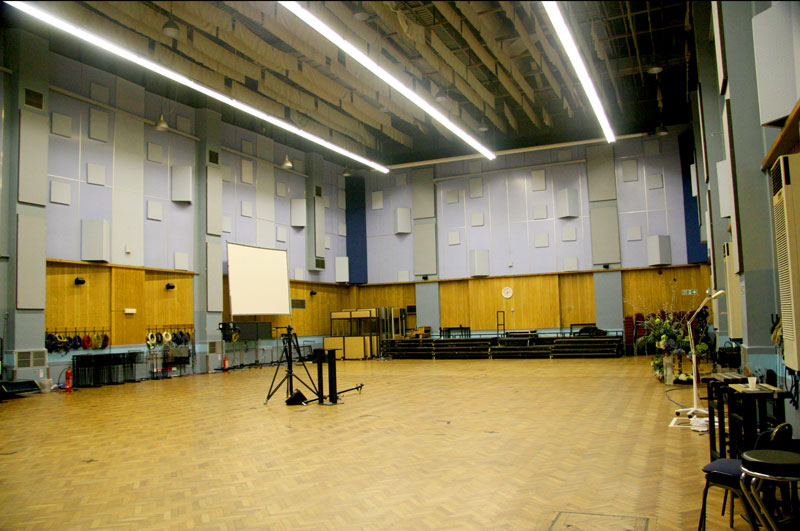 Their next recording session for “When I’m Sixty-Four” was on December 8th, 1966 in EMI Studio One, the session only lasting three hours, from 2:30 to 5:30 pm. Only one Beatle was present during this session since only one was needed. Paul booked this time to record his lead vocals onto the existing rhythm track. A noticeable feature of this single-tracked vocal is the audible smile in Paul’s voice just before the last line of the final verse, this possibly in reaction to John’s previously recorded lead guitar passages which, while done tastefully, are somewhat out of place for a song that was meant as a throw-back to the music of the 1920's. How many songs from that era have an electric lead guitar solo? Their next recording session for “When I’m Sixty-Four” was on December 8th, 1966 in EMI Studio One, the session only lasting three hours, from 2:30 to 5:30 pm. Only one Beatle was present during this session since only one was needed. Paul booked this time to record his lead vocals onto the existing rhythm track. A noticeable feature of this single-tracked vocal is the audible smile in Paul’s voice just before the last line of the final verse, this possibly in reaction to John’s previously recorded lead guitar passages which, while done tastefully, are somewhat out of place for a song that was meant as a throw-back to the music of the 1920's. How many songs from that era have an electric lead guitar solo?
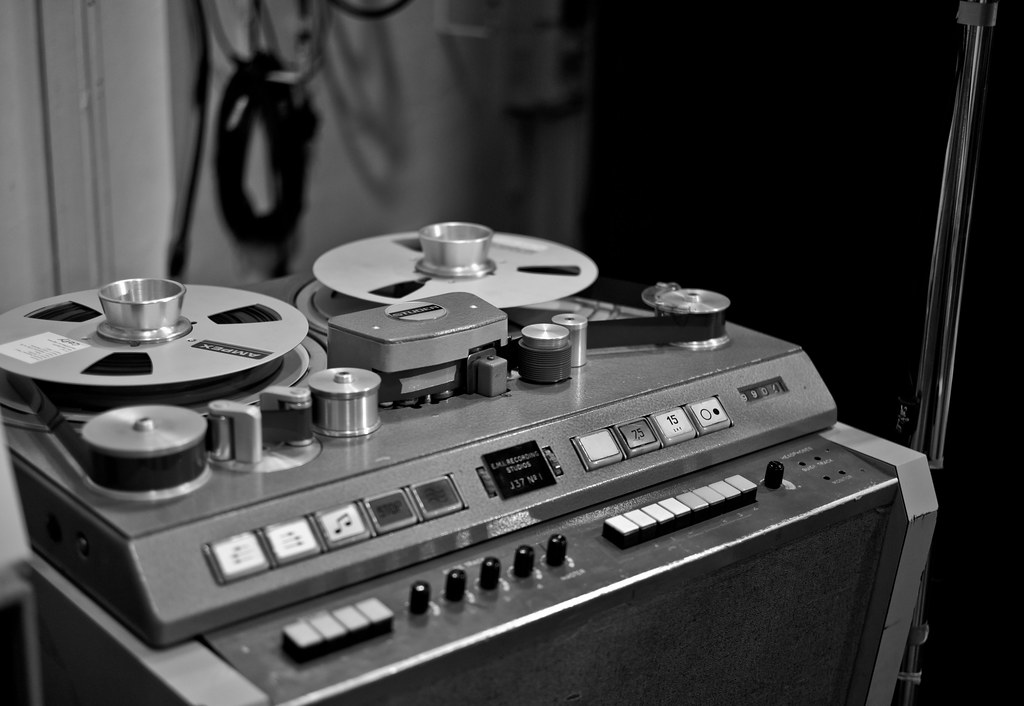 This scaled down recording of "When I'm Sixty-Four," with jovial vocal hijinks from Paul at the end, appeared as a bonus track on the 2017 50th Anniversay editions of "Sgt. Pepper." You'll notice here that the tempo is somewhat slower since the recording was slightly sped up at the mixing stage, as we'll discuss later. This scaled down recording of "When I'm Sixty-Four," with jovial vocal hijinks from Paul at the end, appeared as a bonus track on the 2017 50th Anniversay editions of "Sgt. Pepper." You'll notice here that the tempo is somewhat slower since the recording was slightly sped up at the mixing stage, as we'll discuss later.
 The next three sessions booked for the group saw much work being accomplished on a re-make of “Strawberry Fields Forever,” with “When I’m Sixty-Four” being left off for a little later. December 20th, 1966 was when that later time came, this session beginning at 7 pm in EMI Studio Two. All four Beatles were in attendance for this session this time, Paul, George and John recording the background harmonies heard in the bridges of the song. Ringo had the duty of strategically adding the sound of orchestral bells in the bridges as well. In order to prepare the recording for yet more overdubs, two attempts at a tape reduction were made to clear up more tracks, and the second attempt (labeled "take four") was deemed best. By 1 am the following morning, the session was complete. The next three sessions booked for the group saw much work being accomplished on a re-make of “Strawberry Fields Forever,” with “When I’m Sixty-Four” being left off for a little later. December 20th, 1966 was when that later time came, this session beginning at 7 pm in EMI Studio Two. All four Beatles were in attendance for this session this time, Paul, George and John recording the background harmonies heard in the bridges of the song. Ringo had the duty of strategically adding the sound of orchestral bells in the bridges as well. In order to prepare the recording for yet more overdubs, two attempts at a tape reduction were made to clear up more tracks, and the second attempt (labeled "take four") was deemed best. By 1 am the following morning, the session was complete.
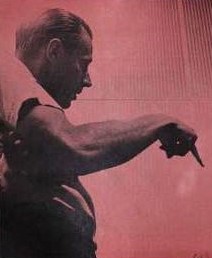 It was possibly at this session, if not before, that McCartney discussed with George Martin what was needed to complete "When I'm Sixty-Four." Geoff Emerick adds: “As was usual for a McCartney song, there were extensive discussions with George Martin about the arrangement. He kept saying that he wanted it to be ‘rootie-tootie,’ so George (Martin) suggested the addition of clarinets.” Paul explained further: “I did it in rooty-tooty variety style. George (Martin) helped me on a clarinet arrangement. I would specify the sound and I loved clarinets so ‘Could we have a clarinet quartet?’ ‘Absolutely.’ I would give him a fairly good idea of what I wanted and George (Martin) would score it because I couldn’t do that. He was very helpful to us.” It was possibly at this session, if not before, that McCartney discussed with George Martin what was needed to complete "When I'm Sixty-Four." Geoff Emerick adds: “As was usual for a McCartney song, there were extensive discussions with George Martin about the arrangement. He kept saying that he wanted it to be ‘rootie-tootie,’ so George (Martin) suggested the addition of clarinets.” Paul explained further: “I did it in rooty-tooty variety style. George (Martin) helped me on a clarinet arrangement. I would specify the sound and I loved clarinets so ‘Could we have a clarinet quartet?’ ‘Absolutely.’ I would give him a fairly good idea of what I wanted and George (Martin) would score it because I couldn’t do that. He was very helpful to us.”
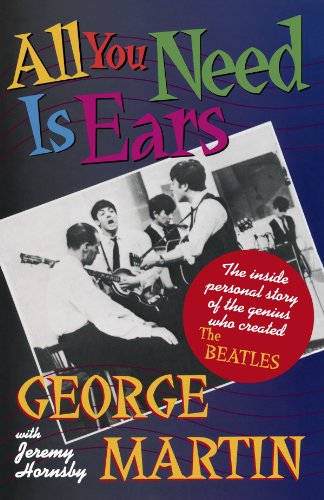 The following day, December 21st, 1966, was the day that the clarinetists were hired to play George Martin’s score for “When I’m Sixty-Four.” Paul was undoubtedly present for this session, possibly being the only Beatle interested in the performance of the clarinetists. Paul, however, didn't quite acquire his “quartet,” since only three musicians were needed for the prepared score, these being Robert Burns, Henry MacKenzie and Frank Reidy. “I scored it for two clarinets and a bass clarinet,” George Martin remembers in his book “All You Need Is Ears.” The following day, December 21st, 1966, was the day that the clarinetists were hired to play George Martin’s score for “When I’m Sixty-Four.” Paul was undoubtedly present for this session, possibly being the only Beatle interested in the performance of the clarinetists. Paul, however, didn't quite acquire his “quartet,” since only three musicians were needed for the prepared score, these being Robert Burns, Henry MacKenzie and Frank Reidy. “I scored it for two clarinets and a bass clarinet,” George Martin remembers in his book “All You Need Is Ears.”
 “The clarinets on that track became a very personal sound to me,” Geoff Emerick adds. “I recorded them really close, bringing them so far forward that they became one of the main focal points.” As what was ordinary for professional classical musicians, they all nailed the performance in a very short time, the session complete in just two hours, from 7 to 9 pm. George Martin continues: “I remember recording it in the cavernous Number One studio at Abbey Road and thinking how the three clarinet players looked as lost as a referee and two linesmen alone in the middle of Wembly Stadium.” George Martin’s recollections were incorrect since the session was in the smaller EMI Studio Two, but the point is taken just the same. “The clarinets on that track became a very personal sound to me,” Geoff Emerick adds. “I recorded them really close, bringing them so far forward that they became one of the main focal points.” As what was ordinary for professional classical musicians, they all nailed the performance in a very short time, the session complete in just two hours, from 7 to 9 pm. George Martin continues: “I remember recording it in the cavernous Number One studio at Abbey Road and thinking how the three clarinet players looked as lost as a referee and two linesmen alone in the middle of Wembly Stadium.” George Martin’s recollections were incorrect since the session was in the smaller EMI Studio Two, but the point is taken just the same.
 Just after the session was complete, about an hour was spent in the control room of EMI Studio Two (9 to 10 pm) to take the first stab at creating a mono mix for the song. Three attempts were made by George Martin, Geoff Emerick and 2nd engineer Phil McDonald, but these were made for demo use only and were not intended for the finished album. Just after the session was complete, about an hour was spent in the control room of EMI Studio Two (9 to 10 pm) to take the first stab at creating a mono mix for the song. Three attempts were made by George Martin, Geoff Emerick and 2nd engineer Phil McDonald, but these were made for demo use only and were not intended for the finished album.
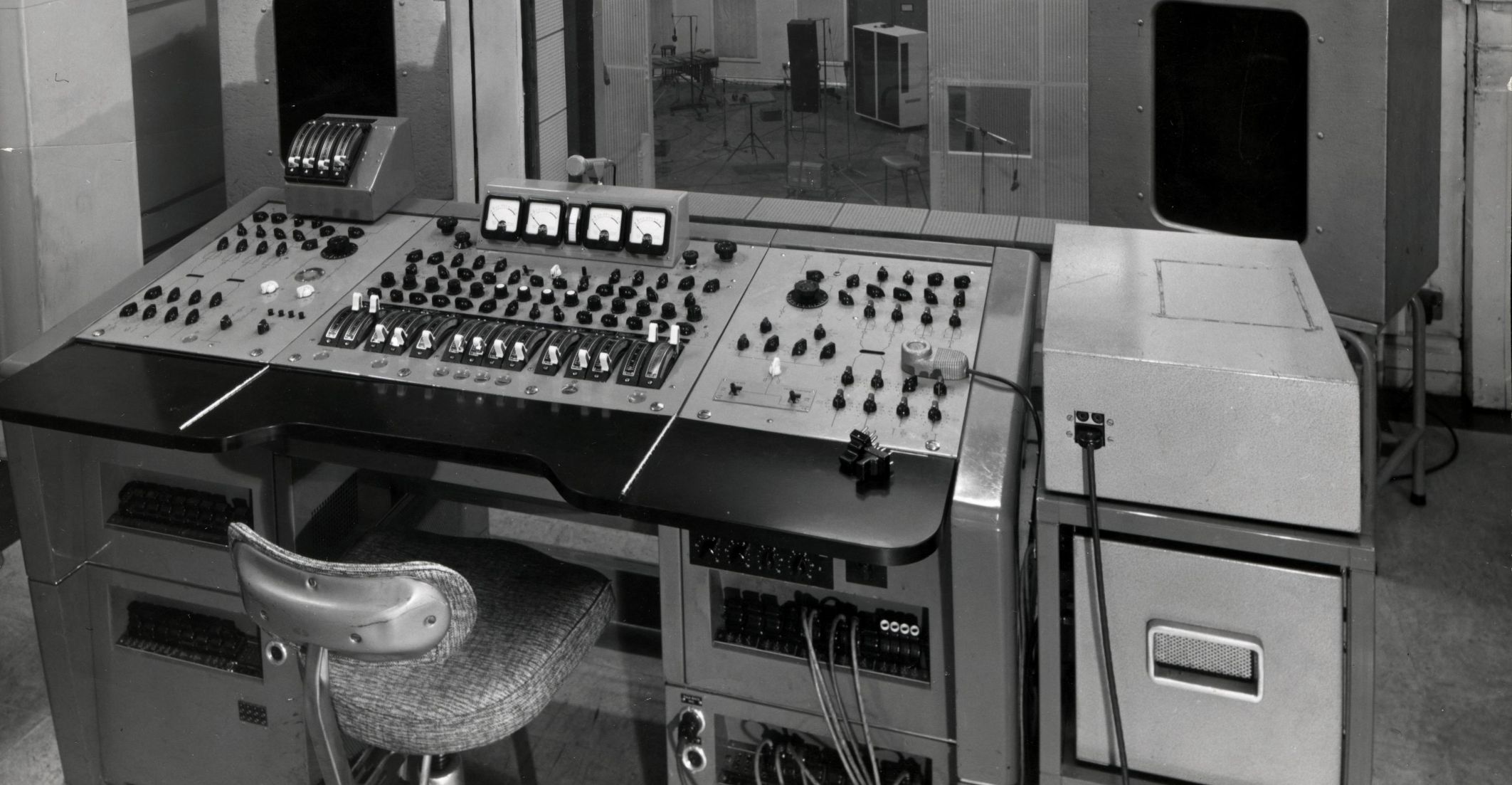 The first attempt at making a useable mono mix for this song was on December 29th, 1966 in the EMI Studio Three control room by the same production team of George Martin, Geoff Emerick and Phil McDonald. After four tries at a mono mix on this day, marked as remixes 4 through 7, "take six" was deemed as best for the US and "take seven" as best for Britain. However, all this work was in vain. The first attempt at making a useable mono mix for this song was on December 29th, 1966 in the EMI Studio Three control room by the same production team of George Martin, Geoff Emerick and Phil McDonald. After four tries at a mono mix on this day, marked as remixes 4 through 7, "take six" was deemed as best for the US and "take seven" as best for Britain. However, all this work was in vain.
 According to Mark Lewisohn’s book “The Beatles Recording Sessions,” “The remixes of ‘When I’m Sixty-Four’ done on 29 December…did not satisfy Paul. He suggested that they scrap all the previous mixes and start again, speeding up the new mix to raise it by as much as a semitone, a big difference.” The new mono mix, created to Paul’s specifications, was done the next day, December 30th, 1966, in the EMI Studio Two control room by the same team of George Martin, Geoff Emerick and Phil McDonald. They only needed one try, remix 8 being the keeper and used for the mono version of the “Sgt. Pepper” album in both the US and Britain. According to Mark Lewisohn’s book “The Beatles Recording Sessions,” “The remixes of ‘When I’m Sixty-Four’ done on 29 December…did not satisfy Paul. He suggested that they scrap all the previous mixes and start again, speeding up the new mix to raise it by as much as a semitone, a big difference.” The new mono mix, created to Paul’s specifications, was done the next day, December 30th, 1966, in the EMI Studio Two control room by the same team of George Martin, Geoff Emerick and Phil McDonald. They only needed one try, remix 8 being the keeper and used for the mono version of the “Sgt. Pepper” album in both the US and Britain.
 But why did McCartney require the mono mix to be sped up? “During the mix," explains Geoff Emerick, "Paul also asked to have the track sped up a great deal, almost a semitone, so that his voice would sound more youthful, like the teenager he was when he originally wrote this song.” This was explained similarly by George Martin on occasion, but Paul recalls it a little bit differently. “George Martin in his book says that I had it speeded up because I wanted to appear younger but I think that was just to make it more rooty-tooty, just lift the key because it was starting to sound a little turgid.” But why did McCartney require the mono mix to be sped up? “During the mix," explains Geoff Emerick, "Paul also asked to have the track sped up a great deal, almost a semitone, so that his voice would sound more youthful, like the teenager he was when he originally wrote this song.” This was explained similarly by George Martin on occasion, but Paul recalls it a little bit differently. “George Martin in his book says that I had it speeded up because I wanted to appear younger but I think that was just to make it more rooty-tooty, just lift the key because it was starting to sound a little turgid.”
 At the turn of the new year, a decision was being made to issue a new single and it appears that “When I’m Sixty-Four” was considered. “Brian (Epstein) was desperate to recover popularity,” George Martin recalls, “and so we wanted to make sure that we had a marvelous seller. He came to me and stated, ‘I must have a really great single. What have you got?’ I said, ‘Well, I’ve got three tracks – and two of them are the best tracks they have ever made. We could release the two together and make a smashing single.’ We did, and it was a smashing single – but it was also a dreadful mistake. We would have sold far more and got higher up in the charts if we had issued one of those (“Strawberry Fields Forever” and “Penny Lane”) with, say ‘When I’m Sixty-Four’ on the back.” At the turn of the new year, a decision was being made to issue a new single and it appears that “When I’m Sixty-Four” was considered. “Brian (Epstein) was desperate to recover popularity,” George Martin recalls, “and so we wanted to make sure that we had a marvelous seller. He came to me and stated, ‘I must have a really great single. What have you got?’ I said, ‘Well, I’ve got three tracks – and two of them are the best tracks they have ever made. We could release the two together and make a smashing single.’ We did, and it was a smashing single – but it was also a dreadful mistake. We would have sold far more and got higher up in the charts if we had issued one of those (“Strawberry Fields Forever” and “Penny Lane”) with, say ‘When I’m Sixty-Four’ on the back.”
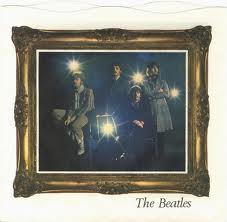 Paul’s book “Many Years From Now” confirms this and specifies that “initially the single was to be ‘Strawberry Fields’ backed with ‘When I’m Sixty-Four.’” EMI documentation for the date of January 2nd, 1967 shows this also, tape copies being created of the recently completed mono mixes for “When I’m Sixty-Four” and “Strawberry Fields Forever” with the intended purpose of being sent to America, this being the usual procedure taken for a new Capitol single release in the states. Paul’s book “Many Years From Now” confirms this and specifies that “initially the single was to be ‘Strawberry Fields’ backed with ‘When I’m Sixty-Four.’” EMI documentation for the date of January 2nd, 1967 shows this also, tape copies being created of the recently completed mono mixes for “When I’m Sixty-Four” and “Strawberry Fields Forever” with the intended purpose of being sent to America, this being the usual procedure taken for a new Capitol single release in the states.
 The stereo mix of this song that was issued worldwide in 1967 was not created until April 17th, 1967, in the control room of EMI Studio Two by George Martin, Geoff Emerick and 2nd engineer Richard Lush. Lush remembers listening to the mono mix on this day as a guide which caused George Martin to question the speed that it was recorded. “He kept saying, ‘Surely it can’t have been that fast?,’” Richard Lush recalls. They acquiesced and sped up the stereo mix just the same. The rhythm track, including the piano overdub, was centered in the mix, while the lead vocals and orchestral bells were panned entirely to the left. The clarinets and the harmony vocals are all panned exclusively to the right channel. The stereo mix of this song that was issued worldwide in 1967 was not created until April 17th, 1967, in the control room of EMI Studio Two by George Martin, Geoff Emerick and 2nd engineer Richard Lush. Lush remembers listening to the mono mix on this day as a guide which caused George Martin to question the speed that it was recorded. “He kept saying, ‘Surely it can’t have been that fast?,’” Richard Lush recalls. They acquiesced and sped up the stereo mix just the same. The rhythm track, including the piano overdub, was centered in the mix, while the lead vocals and orchestral bells were panned entirely to the left. The clarinets and the harmony vocals are all panned exclusively to the right channel.
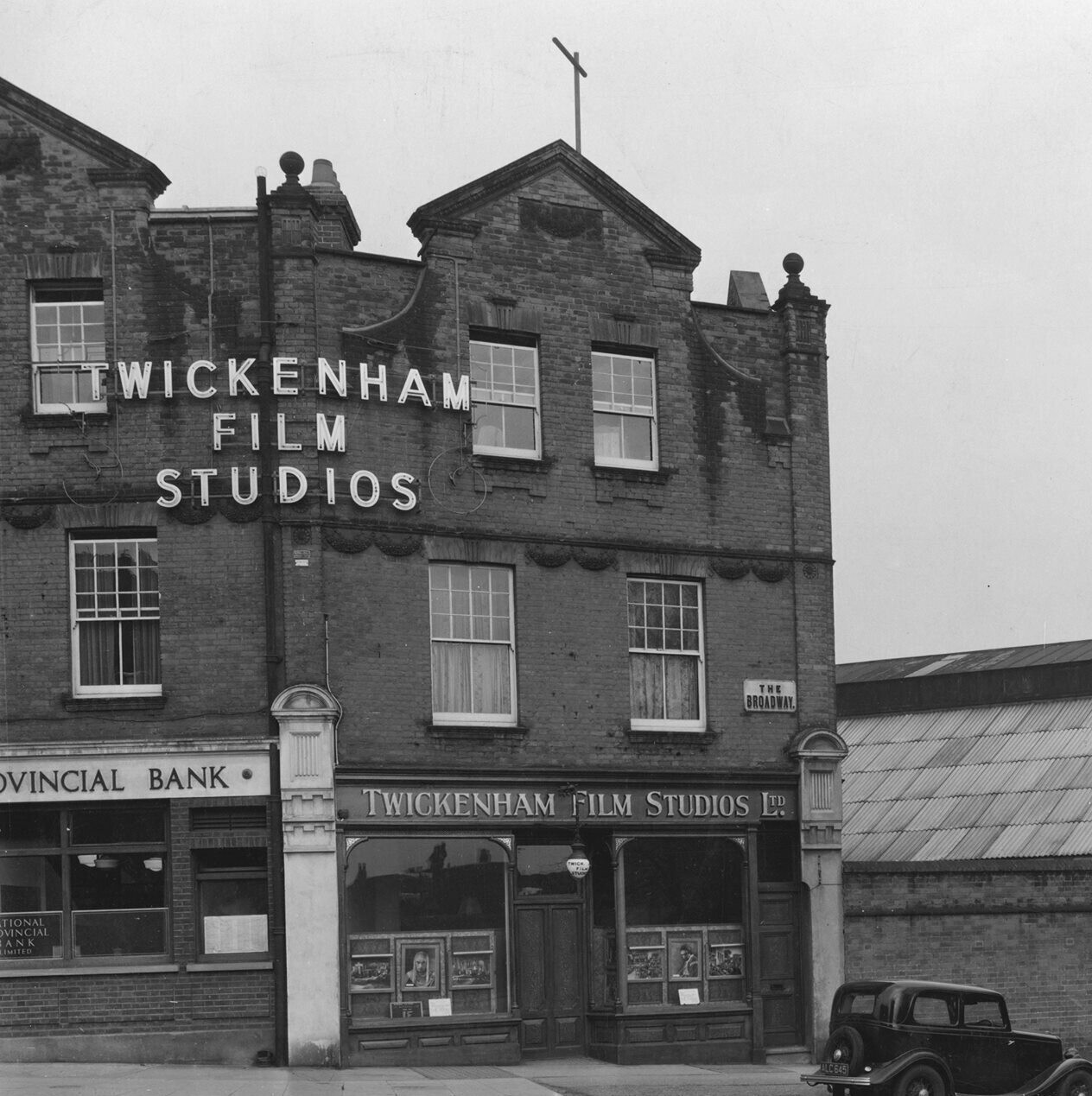 A noteworthy mention here is the group touching on "When I'm Sixty-Four" on January 7th, 1969 in Twickenham Film Studios in London during rehearsals for what eventually became the "Let It Be" album and film. This, of course, was not a serious recording of the song and, therefore, was never officially released to the public. A noteworthy mention here is the group touching on "When I'm Sixty-Four" on January 7th, 1969 in Twickenham Film Studios in London during rehearsals for what eventually became the "Let It Be" album and film. This, of course, was not a serious recording of the song and, therefore, was never officially released to the public.
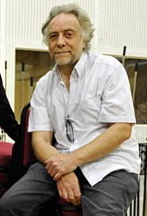 Another stereo mix of this song's original recording was made sometime in 1999 for release on the album “Yellow Submarine Songtrack.” This new mix, which took them back to the actual "Sgt Pepper" tapes, was made at Abbey Road Studios by Peter Cobbin, Paul Hicks, Mirek Stiles and Allan Rouse. The stereo landscape is quite different here, all vocals (lead and harmony) being centered in the mix with the clarinets panned mostly to the right channel, but not entirely. The rhythm track was still centered but the piano overdub and the orchestral bells are only heard in the left channel. Another stereo mix of this song's original recording was made sometime in 1999 for release on the album “Yellow Submarine Songtrack.” This new mix, which took them back to the actual "Sgt Pepper" tapes, was made at Abbey Road Studios by Peter Cobbin, Paul Hicks, Mirek Stiles and Allan Rouse. The stereo landscape is quite different here, all vocals (lead and harmony) being centered in the mix with the clarinets panned mostly to the right channel, but not entirely. The rhythm track was still centered but the piano overdub and the orchestral bells are only heard in the left channel.
 The ultimate stereo mix of this song, however, was created sometime during 2016 or 2017 by George Martin's son Giles Martin and engineer Sam Okell for 50th Anniversary editions of the "Sgt. Pepper" album. Along with this vibrant stereo mix, patterned after the favorable mono mix, Giles Martin went back to the original session tapes to prepare a mix of "take two" of the song to get an early glimpse of its recording. The ultimate stereo mix of this song, however, was created sometime during 2016 or 2017 by George Martin's son Giles Martin and engineer Sam Okell for 50th Anniversary editions of the "Sgt. Pepper" album. Along with this vibrant stereo mix, patterned after the favorable mono mix, Giles Martin went back to the original session tapes to prepare a mix of "take two" of the song to get an early glimpse of its recording.
Song Structure and Style
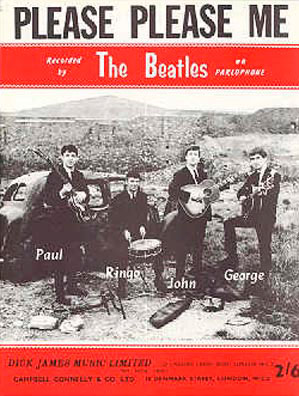 Since Paul wrote the melody of this song so early in life, not to mention it being a pastiche of the 1920’s, the structure is pretty straightforward and quite similar to most of the early Lennon / McCartney catalog. The song's stucture consists of a ‘verse/ bridge/ verse/ bridge/ verse’ format (or ababa) with an introduction and conclusion thrown in. There is no chorus or refrain, however the final measures of each verse act as the hook-line and contain the song’s title as do a plethora of early Beatles tracks (see “Please Please Me,” “I Saw Her Standing There” and “Can’t Buy Me Love” as a few of many examples). Since Paul wrote the melody of this song so early in life, not to mention it being a pastiche of the 1920’s, the structure is pretty straightforward and quite similar to most of the early Lennon / McCartney catalog. The song's stucture consists of a ‘verse/ bridge/ verse/ bridge/ verse’ format (or ababa) with an introduction and conclusion thrown in. There is no chorus or refrain, however the final measures of each verse act as the hook-line and contain the song’s title as do a plethora of early Beatles tracks (see “Please Please Me,” “I Saw Her Standing There” and “Can’t Buy Me Love” as a few of many examples).
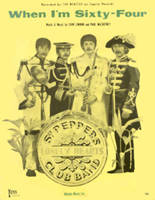 Proceedings begin with a simple introduction which highlights the clarinets quite nicely, the bass clarinet holding down the "oom-pah" style bass line with the other two clarinets harmonizing on the characteristic introductory melody line, which is a slight alteration from the opening melody line of the verses (“When I get older, losing my hair...”). The only additional instrumentation is Paul on bass and Ringo playing his snare with brushes. This introduction is actually six measures long, the first four measures finishing out the introductory melody line and then coming to a halt midway through the fourth measure (another ‘Beatles break’) which, when repeated at the conclusion of the song, becomes the ending beat. In the intro, however, another two measures are included as if to keep us in anticipation for when the singer happened to be ready to begin. The bass clarinet includes a small anticipatory frill in the final moments of the fifth measure to add a touch of vaudevillian flair. Proceedings begin with a simple introduction which highlights the clarinets quite nicely, the bass clarinet holding down the "oom-pah" style bass line with the other two clarinets harmonizing on the characteristic introductory melody line, which is a slight alteration from the opening melody line of the verses (“When I get older, losing my hair...”). The only additional instrumentation is Paul on bass and Ringo playing his snare with brushes. This introduction is actually six measures long, the first four measures finishing out the introductory melody line and then coming to a halt midway through the fourth measure (another ‘Beatles break’) which, when repeated at the conclusion of the song, becomes the ending beat. In the intro, however, another two measures are included as if to keep us in anticipation for when the singer happened to be ready to begin. The bass clarinet includes a small anticipatory frill in the final moments of the fifth measure to add a touch of vaudevillian flair.
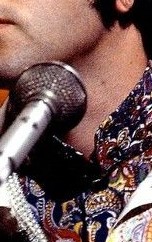 The first sixteen-measure verse comes next, with Paul’s vocal coming in directly on the downbeat. All three clarinets hold out a harmonized chord as a backdrop to the first vocal line, one of them playing a simple progression to fill in the gap as Paul takes a breath in the fourth measure. The fifth measure brings in the piano for the first time playing a simple choppy chord pattern on the quarter notes while the clarinets perform another simple harmony chord in the background. The sixth measure shows Ringo playing a classy fill on the brushes to introduce the "break" in the seventh measure, which leaves only Paul on vocals and bass to fill out the line “birthday greetings, bottle of wine.” The first sixteen-measure verse comes next, with Paul’s vocal coming in directly on the downbeat. All three clarinets hold out a harmonized chord as a backdrop to the first vocal line, one of them playing a simple progression to fill in the gap as Paul takes a breath in the fourth measure. The fifth measure brings in the piano for the first time playing a simple choppy chord pattern on the quarter notes while the clarinets perform another simple harmony chord in the background. The sixth measure shows Ringo playing a classy fill on the brushes to introduce the "break" in the seventh measure, which leaves only Paul on vocals and bass to fill out the line “birthday greetings, bottle of wine.”
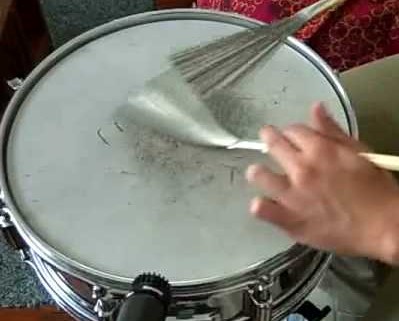 The second half of the verse brings in the same arrangement of instruments as the first four measures but with additional chord changes in measures eleven and twelve. McCartney's piano never returns in this verse, however the clarinets play a choppy quarter note harmony melody through the quickly changing chord pattern of the final four measures. The sixteenth measure has Ringo showing off on the brushes once again and ending with a tap on his open hi-hat while the bass clarinet plays a fast-moving figure to round out the verse. The second half of the verse brings in the same arrangement of instruments as the first four measures but with additional chord changes in measures eleven and twelve. McCartney's piano never returns in this verse, however the clarinets play a choppy quarter note harmony melody through the quickly changing chord pattern of the final four measures. The sixteenth measure has Ringo showing off on the brushes once again and ending with a tap on his open hi-hat while the bass clarinet plays a fast-moving figure to round out the verse.
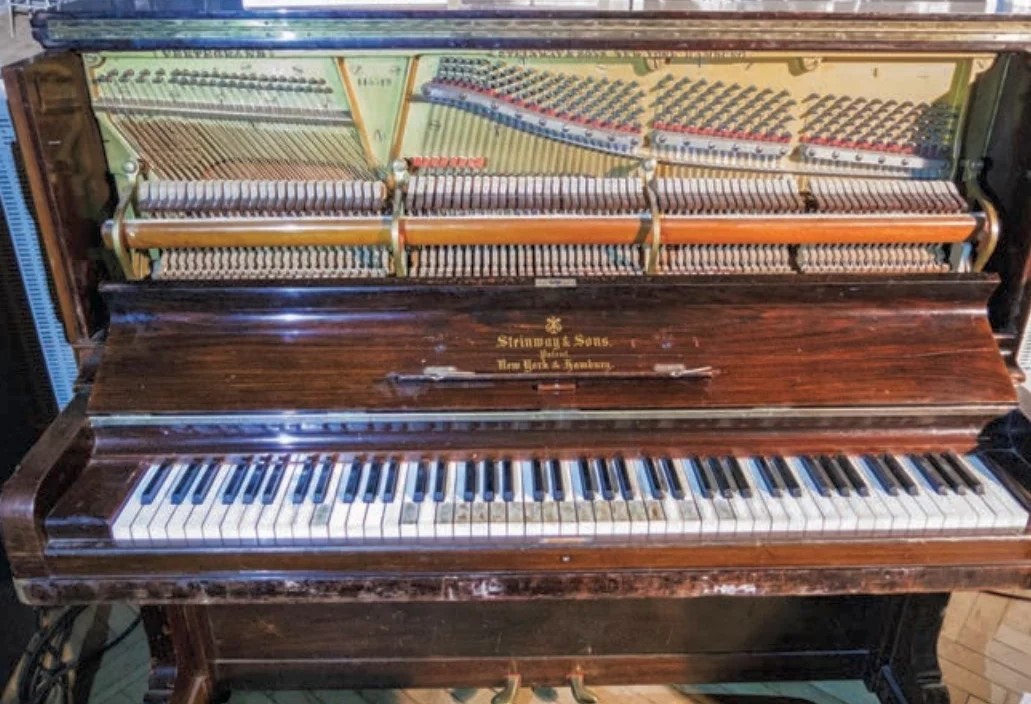 An odd numbered seventeen-measure bridge is now heard which appears to be an instrumental section because of the first four measures being without McCartney’s vocals, only John, Paul and George’s harmonic "ooh"s being heard in measures two through four. The bridge is a welcome contrast to the verses by being in a minor key, Ringo limited to only beating the bass drum, and the piano overdub being heard throughout its entire length. Another feature of the first four measures of the bridge is the harmonized clarinet melody line which works nicely with the vocal harmonies. The fifth measure brings in the lead vocals which appear as an afterthought in this bridge, being that the vocal lines are very scant and are rather meaningless to the storyline of the song. The background vocalists switch to a tightly arranged “aah” melody line as a backwash to the proceedings of the sixth through eighth measures. The drums even back out of the picture in the seventh and eighth measure to give the harmonies more prominence. An odd numbered seventeen-measure bridge is now heard which appears to be an instrumental section because of the first four measures being without McCartney’s vocals, only John, Paul and George’s harmonic "ooh"s being heard in measures two through four. The bridge is a welcome contrast to the verses by being in a minor key, Ringo limited to only beating the bass drum, and the piano overdub being heard throughout its entire length. Another feature of the first four measures of the bridge is the harmonized clarinet melody line which works nicely with the vocal harmonies. The fifth measure brings in the lead vocals which appear as an afterthought in this bridge, being that the vocal lines are very scant and are rather meaningless to the storyline of the song. The background vocalists switch to a tightly arranged “aah” melody line as a backwash to the proceedings of the sixth through eighth measures. The drums even back out of the picture in the seventh and eighth measure to give the harmonies more prominence.
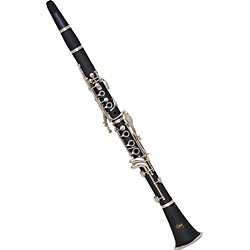 The harmonies then vanish for the second half of the bridge while one of the clarinets plays a dated sour high note in their harmonized line at the start of the ninth measure in order to fill in the gap before Paul begins singing once again in the tenth measure. The twelfth measure introduces Ringo on orchestral bells playing an ascending three note run and then on the downbeat of each remaining measure of the bridge. Ringo also adds some tinkering on his cymbals from the thirteenth through fifteenth measures, which keeps his hands busy during the rhythm track. The sixteenth and seventeenth measures bring in another "Beatles break" that features some interesting syncopated interplay between the clarinets, bass and Ringo’s orchestral bells. The harmonies then vanish for the second half of the bridge while one of the clarinets plays a dated sour high note in their harmonized line at the start of the ninth measure in order to fill in the gap before Paul begins singing once again in the tenth measure. The twelfth measure introduces Ringo on orchestral bells playing an ascending three note run and then on the downbeat of each remaining measure of the bridge. Ringo also adds some tinkering on his cymbals from the thirteenth through fifteenth measures, which keeps his hands busy during the rhythm track. The sixteenth and seventeenth measures bring in another "Beatles break" that features some interesting syncopated interplay between the clarinets, bass and Ringo’s orchestral bells.
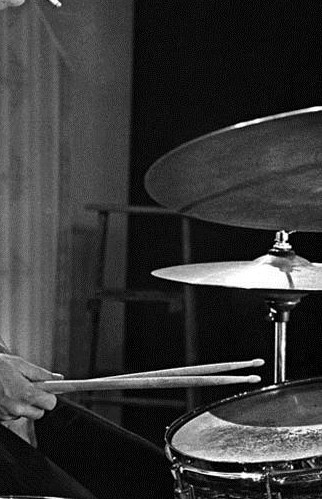 Verse two then begins, which is fully identical instrumentally to the first with the addition of one clarinet run in the eighth measure during the vocal line “go for a ride.” The bridge that follows it, however, changes things up quite a bit more. For one thing, Paul sings a vocal line that is much more involved rhythmically and thought through lyrically. The background vocals chime in only during measures six through eight with the lyrical phrase “we shall scrimp and save” that mimics the "aah" melody line from the first bridge. Ringo’s cymbal tinkering begins in the tenth measure this time while his orchestral bell hits are much more syncopated than before. Also, notice Paul’s rolling of the r’s in the line “grrrandchildren on yourrr knee.” Verse two then begins, which is fully identical instrumentally to the first with the addition of one clarinet run in the eighth measure during the vocal line “go for a ride.” The bridge that follows it, however, changes things up quite a bit more. For one thing, Paul sings a vocal line that is much more involved rhythmically and thought through lyrically. The background vocals chime in only during measures six through eight with the lyrical phrase “we shall scrimp and save” that mimics the "aah" melody line from the first bridge. Ringo’s cymbal tinkering begins in the tenth measure this time while his orchestral bell hits are much more syncopated than before. Also, notice Paul’s rolling of the r’s in the line “grrrandchildren on yourrr knee.”
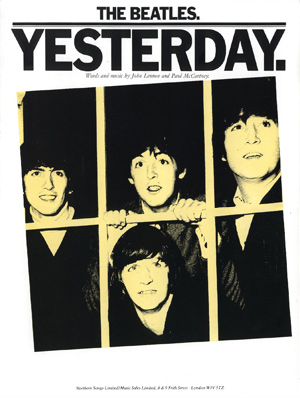 The final verse is next heard which adds in a couple more elements from the previous ones, the first being a clarinet line harmonizing with Paul’s vocal melody. The second element is John on electric guitar which is first detected in the fifth measure and is heard through till the end of the verse. John meanders around a little bit stylistically, even adding a "blue note" in measure tweve, not unlike what is heard at the end of the chorus of “I Wanna Be Your Man” and in the second bridge of “Yesterday.” This "blue note" appears to put a smile on Paul’s face as he sings the final line of the song in a campy 20’s style with a throwback “hooo” at the end. The final verse is next heard which adds in a couple more elements from the previous ones, the first being a clarinet line harmonizing with Paul’s vocal melody. The second element is John on electric guitar which is first detected in the fifth measure and is heard through till the end of the verse. John meanders around a little bit stylistically, even adding a "blue note" in measure tweve, not unlike what is heard at the end of the chorus of “I Wanna Be Your Man” and in the second bridge of “Yesterday.” This "blue note" appears to put a smile on Paul’s face as he sings the final line of the song in a campy 20’s style with a throwback “hooo” at the end.
 Then we hear a four-measure conclusion that is actually a full repeat of the first four measures of the intro, the only difference being Ringo playing on the cymbals instead of brushes on his snare and a final two chords on the piano. Then we hear a four-measure conclusion that is actually a full repeat of the first four measures of the intro, the only difference being Ringo playing on the cymbals instead of brushes on his snare and a final two chords on the piano.
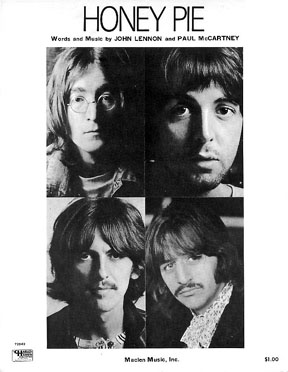 Paul has quite an easy job as a musician on this track, his bass performance being probably his simplest on the entire “Sgt. Pepper” album. His vocal work, while appearing effortless, is performed single-tracked and done suitably for the occasion. Ringo should be next up for mention because of his excellent adaptation to the post-WW1 style of drumming as well as putting in a more-than-adequate performance on orchestral bells. George may have been less involved (sitar just wouldn’t have worked here) but he showed himself up for the vocal challenge with his harmonies as did John. And three cheers also to John for insisting on putting his two cents in on guitar even when it could have been done without. He showed himself similarly cooperative on Paul’s “White Album” “granny music” gem “Honey Pie” a year-and-a-half later. Paul has quite an easy job as a musician on this track, his bass performance being probably his simplest on the entire “Sgt. Pepper” album. His vocal work, while appearing effortless, is performed single-tracked and done suitably for the occasion. Ringo should be next up for mention because of his excellent adaptation to the post-WW1 style of drumming as well as putting in a more-than-adequate performance on orchestral bells. George may have been less involved (sitar just wouldn’t have worked here) but he showed himself up for the vocal challenge with his harmonies as did John. And three cheers also to John for insisting on putting his two cents in on guitar even when it could have been done without. He showed himself similarly cooperative on Paul’s “White Album” “granny music” gem “Honey Pie” a year-and-a-half later.
 While many may wonder if McCartney is singing to someone he is currently living with or to somebody he hardly knows, it appears that the comedic “goon show” sentiments of this song need not be analyzed that closely. Basically, with McCartney being quite young at the time, he appears to be lampooning the lifestyle of people in the autumn of their life, giving a "surfacy" estimation of the uncertainty of old age. While many may wonder if McCartney is singing to someone he is currently living with or to somebody he hardly knows, it appears that the comedic “goon show” sentiments of this song need not be analyzed that closely. Basically, with McCartney being quite young at the time, he appears to be lampooning the lifestyle of people in the autumn of their life, giving a "surfacy" estimation of the uncertainty of old age.
 It is interesting how the older generation gets a "kick" out of this seemingly charming Beatles song about growing old. A song sung in this style which begins with the lyrics “when I get older, losing my hair” may give them a chuckle, but the signature line of the “postcard” mentioned in the final verse being, “yours sincerely, Wasting Away” may be just a little too morbid to fit into the criteria of a cute sing-along for the oldsters. It is interesting how the older generation gets a "kick" out of this seemingly charming Beatles song about growing old. A song sung in this style which begins with the lyrics “when I get older, losing my hair” may give them a chuckle, but the signature line of the “postcard” mentioned in the final verse being, “yours sincerely, Wasting Away” may be just a little too morbid to fit into the criteria of a cute sing-along for the oldsters.
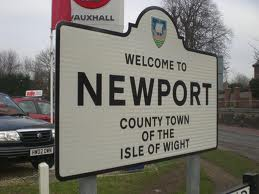 That having been said, the continuing of sending a “valentine,” offering “birthday greetings” and hoping their spouse will still “need” and “feed” them is enough to keep them tapping their feet. The depictions of usefulness in older age, such as by “mending a fuse,” to “knit a sweater” and “doing the garden, digging the weeds” sounds like quite a fulfilling life for the song’s intended audience, even though McCartney undoubtedly brought this all up to show how mundane and meaningless life may be when reduced to this. “Who could ask for more,” he sarcastically asks. At least they can “scrimp and save” to go “every summer” to the same rented “cottage in the Isle Of Wight” in order to enjoy their strangely named “grandchildren,” namely "Vera, Chuck and Dave." That having been said, the continuing of sending a “valentine,” offering “birthday greetings” and hoping their spouse will still “need” and “feed” them is enough to keep them tapping their feet. The depictions of usefulness in older age, such as by “mending a fuse,” to “knit a sweater” and “doing the garden, digging the weeds” sounds like quite a fulfilling life for the song’s intended audience, even though McCartney undoubtedly brought this all up to show how mundane and meaningless life may be when reduced to this. “Who could ask for more,” he sarcastically asks. At least they can “scrimp and save” to go “every summer” to the same rented “cottage in the Isle Of Wight” in order to enjoy their strangely named “grandchildren,” namely "Vera, Chuck and Dave."
 "I once ran into a lady who played piano at old people's homes," said Paul in his 2021 book "The Lyrics." "She told me, 'Mr. McCartney, I hope you don't mind, but I've had to update "When I'm Sixty-Four" to "When I'm Eighty-Four." Sometimes to "When I'm Ninety-Four."' Those people think sixty-four is rather young. I wrote 'When I'm Sixty-four' when I was twenty-four-ish, so sixty-four seemed very old then. Now it looks quite sprightly." "I once ran into a lady who played piano at old people's homes," said Paul in his 2021 book "The Lyrics." "She told me, 'Mr. McCartney, I hope you don't mind, but I've had to update "When I'm Sixty-Four" to "When I'm Eighty-Four." Sometimes to "When I'm Ninety-Four."' Those people think sixty-four is rather young. I wrote 'When I'm Sixty-four' when I was twenty-four-ish, so sixty-four seemed very old then. Now it looks quite sprightly."
American Releases
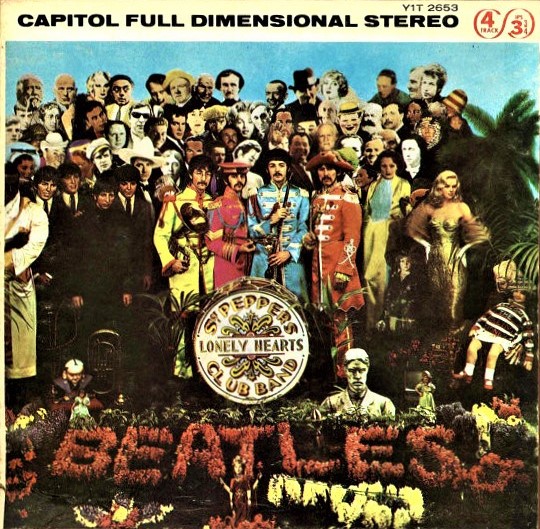 June 2nd, 1967 was the American release date for the landmark album “Sgt. Pepper’s Lonely Hearts Club Band.” Positioning “When I’m Sixty-Four” after the religiously heady “Within You Without You” was quite startling for the listener, although this did wonders in displaying the immense variety of musical styles The Beatles were capable of by 1967. This album continued to be reissued in the US on vinyl throughout the years. June 2nd, 1967 was the American release date for the landmark album “Sgt. Pepper’s Lonely Hearts Club Band.” Positioning “When I’m Sixty-Four” after the religiously heady “Within You Without You” was quite startling for the listener, although this did wonders in displaying the immense variety of musical styles The Beatles were capable of by 1967. This album continued to be reissued in the US on vinyl throughout the years.
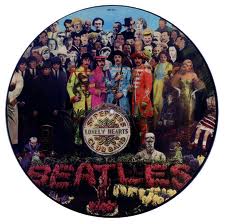 In 1978, the album got quite an unusual release, this being as a picture disc with the front cover on the a-side and a close-up of the “Sgt Pepper” drum head on the b-side. Capitol then re-released the picture disc on December 15th, 2017 on 180 Gram vinyl using the new Giles Martin stereo mix. In 1978, the album got quite an unusual release, this being as a picture disc with the front cover on the a-side and a close-up of the “Sgt Pepper” drum head on the b-side. Capitol then re-released the picture disc on December 15th, 2017 on 180 Gram vinyl using the new Giles Martin stereo mix.
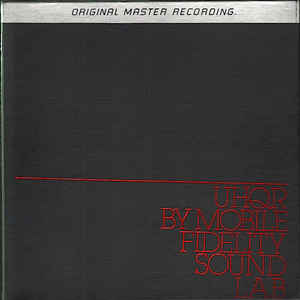 Two interesting American vinyl reissues of “Sgt. Pepper” came out as "Original Master Recording" editions produced through Mobile Fidelity Sound Lab. The first edition was released in September of 1982 (matrix # UHQR "Ultra High Quality Recording" 1-100) and listed for $40 per copy, which was more than five times the cost of the standard version. This edition was limited to 5000 sequentially numbered copies that weighed 200 grams (double the weight of conventional vinyl at that time) and were packaged between layers of protective foam rubber in a thick box. The second edition from Mobile Fidelity Sound Lab was released in June of 1983 similar to the rest of the Beatles catalog released within their series. Both of these were prepared utilizing half-speed mastering technology from the original master tape on loan from EMI. These versions of “Sgt. Pepper” were only available for a short time and are quite collectible today. Two interesting American vinyl reissues of “Sgt. Pepper” came out as "Original Master Recording" editions produced through Mobile Fidelity Sound Lab. The first edition was released in September of 1982 (matrix # UHQR "Ultra High Quality Recording" 1-100) and listed for $40 per copy, which was more than five times the cost of the standard version. This edition was limited to 5000 sequentially numbered copies that weighed 200 grams (double the weight of conventional vinyl at that time) and were packaged between layers of protective foam rubber in a thick box. The second edition from Mobile Fidelity Sound Lab was released in June of 1983 similar to the rest of the Beatles catalog released within their series. Both of these were prepared utilizing half-speed mastering technology from the original master tape on loan from EMI. These versions of “Sgt. Pepper” were only available for a short time and are quite collectible today.
The album got its first compact disc release on September 21st, 1987. It was then re-released in a remastered state on September 9th, 2009.
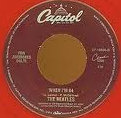 Although “When I’m Sixty-Four” missed out being released as a single in 1967, it finally did become a single in the US on January 24th, 1996. This “For Jukebox Only” red vinyl single on the Capitol Cema series had the song as the b-side to “Lucy In The Sky With Diamonds” and is quite the collectable today. Although “When I’m Sixty-Four” missed out being released as a single in 1967, it finally did become a single in the US on January 24th, 1996. This “For Jukebox Only” red vinyl single on the Capitol Cema series had the song as the b-side to “Lucy In The Sky With Diamonds” and is quite the collectable today.
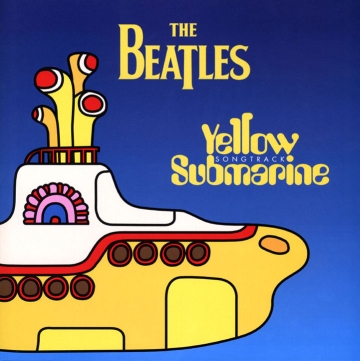 On September 13th, 1999, the album “Yellow Submarine Songtrack” was released in the states which, as mentioned above, featured a newly re-mixed and remastered version of “When I’m Sixty-Four” that repositions some elements to create a more modern stereo landscape. The vibrancy of the track is much better as well. On September 13th, 1999, the album “Yellow Submarine Songtrack” was released in the states which, as mentioned above, featured a newly re-mixed and remastered version of “When I’m Sixty-Four” that repositions some elements to create a more modern stereo landscape. The vibrancy of the track is much better as well.
 For those interested in owning the original 1967 mono version of "When I'm Sixty-Four," it was released on CD for the first time in the box set “The Beatles In Mono” on September 9th, 2009, and then on vinyl on September 9th, 2014. For those interested in owning the original 1967 mono version of "When I'm Sixty-Four," it was released on CD for the first time in the box set “The Beatles In Mono” on September 9th, 2009, and then on vinyl on September 9th, 2014.
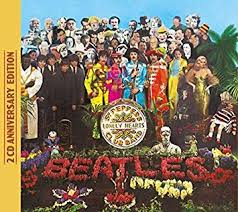 On May 26th, 2017, a newly mixed stereo version of the album was released based on the superior mono mix of 1967. A vibrant new mix of "When I'm Sixty-Four" is included in all editions of this re-release. In addition, "take two" is contained as a bonus track on both the "2 CD Anniversary Edition" and also the "Super Deluxe Edition" box set. On May 26th, 2017, a newly mixed stereo version of the album was released based on the superior mono mix of 1967. A vibrant new mix of "When I'm Sixty-Four" is included in all editions of this re-release. In addition, "take two" is contained as a bonus track on both the "2 CD Anniversary Edition" and also the "Super Deluxe Edition" box set.
Live Performances
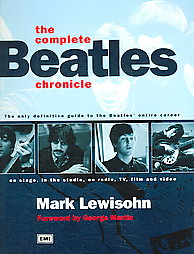 While not considering it to be suitable for his new group The Beatles, Paul did take advantage of the misfortunes of having their amps go out, or the electricity going down, to run through the song on piano while at The Cavern Club or even during their many residencies in Hamburg. While no recorded performance exists, Mark Lewisohn’s 1992 book “The Complete Beatles Chronicle” lists the group playing the song from 1960 through 1962. Paul was proud enough to revive these memories and complete the song for recording purposes in late 1966, but their touring days were over at that point and it was never brought to another Beatles stage. While not considering it to be suitable for his new group The Beatles, Paul did take advantage of the misfortunes of having their amps go out, or the electricity going down, to run through the song on piano while at The Cavern Club or even during their many residencies in Hamburg. While no recorded performance exists, Mark Lewisohn’s 1992 book “The Complete Beatles Chronicle” lists the group playing the song from 1960 through 1962. Paul was proud enough to revive these memories and complete the song for recording purposes in late 1966, but their touring days were over at that point and it was never brought to another Beatles stage.
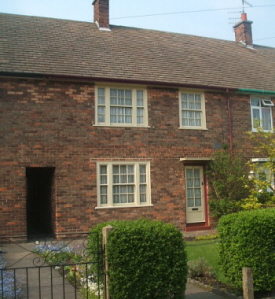 Television audiences, however, were later treated to a quick rendition of this song as Paul re-visited his childhood home on 20 Forthlin Rd. in Liverpool while filming a segment for the "The Late Late Show" with James Corden. After entering the home, Paul played a quick rendition of "When I'm Sixty-Four" on the piano and then reminisced about his childhood. This episode aired on June 21st, 2018, an hour-long special with additional footage which was broadcast on August 20th of that year. Television audiences, however, were later treated to a quick rendition of this song as Paul re-visited his childhood home on 20 Forthlin Rd. in Liverpool while filming a segment for the "The Late Late Show" with James Corden. After entering the home, Paul played a quick rendition of "When I'm Sixty-Four" on the piano and then reminisced about his childhood. This episode aired on June 21st, 2018, an hour-long special with additional footage which was broadcast on August 20th of that year.
Conclusion
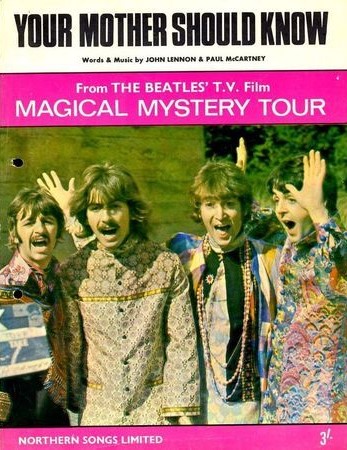 The novelty technique that Paul demonstrated on “When I’m Sixty-Four” gained enough notoriety that he thought to reprise it on two later occasions in The Beatles catalog. The first was a semi-nostalgic approach as delivered in 1967’s “Your Mother Should Know,” followed up by yet another full-blown flashback to yesteryear on 1968’s “Honey Pie,” clarinets and all. As with any sequel, no matter which medium it is, the original most often has the biggest impact and is the most popular. A true test that this is the case with “When I’m Sixty-Four” would be to inquire of any parent of a first-generation Beatles fan about their favorite Beatles song. I'd venture to guess that this song would be one of the first to come to their minds…along with “Yesterday” of course. The novelty technique that Paul demonstrated on “When I’m Sixty-Four” gained enough notoriety that he thought to reprise it on two later occasions in The Beatles catalog. The first was a semi-nostalgic approach as delivered in 1967’s “Your Mother Should Know,” followed up by yet another full-blown flashback to yesteryear on 1968’s “Honey Pie,” clarinets and all. As with any sequel, no matter which medium it is, the original most often has the biggest impact and is the most popular. A true test that this is the case with “When I’m Sixty-Four” would be to inquire of any parent of a first-generation Beatles fan about their favorite Beatles song. I'd venture to guess that this song would be one of the first to come to their minds…along with “Yesterday” of course.
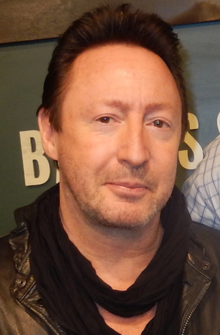 Although McCartney desisted from continuing to display his secret passion for his dad’s style of music for the remainder of The Beatles' career (undoubtedly steering away from it because of John’s attitude of it being “granny music sh*t”), he felt strongly enough about it to bring it back during his Wings days. Both “You Gave Me The Answer” and “Baby’s Request” do well to harken back to the likes of “When I’m Sixty-Four,” but as serious pieces of music minus the humor. While all of these later compositions work nicely and were well written, as one would usually expect from Paul, “When I’m Sixty-Four” seems to epitomize the style and feeling of the era the best. So much so, in fact, that Julian Lennon’s version of the song, as used beautifully in a 2002 Allstate TV commercial, shows the composition as being nothing short of irresistible. Although McCartney desisted from continuing to display his secret passion for his dad’s style of music for the remainder of The Beatles' career (undoubtedly steering away from it because of John’s attitude of it being “granny music sh*t”), he felt strongly enough about it to bring it back during his Wings days. Both “You Gave Me The Answer” and “Baby’s Request” do well to harken back to the likes of “When I’m Sixty-Four,” but as serious pieces of music minus the humor. While all of these later compositions work nicely and were well written, as one would usually expect from Paul, “When I’m Sixty-Four” seems to epitomize the style and feeling of the era the best. So much so, in fact, that Julian Lennon’s version of the song, as used beautifully in a 2002 Allstate TV commercial, shows the composition as being nothing short of irresistible.
Song Summary
“When I’m Sixty-Four”
Written by: John Lennon / Paul McCartney
-
Song Written: 1956, completed November, 1966
-
Song Recorded: December 6, 8, 20 & 21, 1966
-
First US Release Date: June 2, 1967
-
-
US Single Release: Capitol Cema #S7-18896
-
Highest Chart Position: n/a
-
-
Length: 2:38
-
Key: D flat major
-
Producer: George Martin
-
Engineers: Geoff Emerick, Phil McDonald
Instrumentation (most likely):
-
Paul McCartney - Lead and Harmony Vocals, Bass Guitar (1964 Rickenbacker 4001 S), Piano (Hamburg Steinway Baby Grand)
-
John Lennon - Lead Guitar (1965 Epiphone Casino ES-230TD), Harmony Vocals
-
Ringo Starr - Drums (1964 Ludwig Super Classic Black Oyster Pearl), Orchestral Bells
-
George Harrison - Harmony Vocals
-
-
Henry MacKenzie - Clarinet
-
Written and compiled by Dave Rybaczewski
|
IF YOU WOULD LIKE TO MAKE A DONATION TO KEEP THIS WEBSITE UP AND RUNNING, PLEASE CLICK BELOW!
Sign Up Below for our MONTHLY BEATLES TRIVIA QUIZ!
|